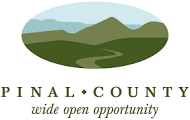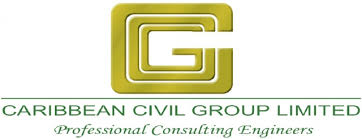News
County hopes to correct stormwater ‘problems of the past
Oct 13, 2021
 By: Mark Parker | Original Source
By: Mark Parker | Original Source 
Pinellas County is adopting a revised stormwater manual in the hopes of correcting previous problem areas while addressing ongoing changes to both the climate and the community.
The Pinellas Board of County Commissioners unanimously approved a revised stormwater manual at its board meeting Tuesday, concluding a year-long process. Kelli Levy, Director of Public Works, led the presentation on the updated manual.
In addition to internal staff and the Development Community Advisory Committee, Levy noted that a third-party engineering firm not involved with development in the county was enlisted to provide an unbiased, extra pair of eyes, which Levy said was very helpful in the process.
The manual was previously approved by the Development Review Committee and Local Planning Authority, and the commissioners’ approval was the last step before implementation. The Development Review Committee will form a smaller group to monitor the effectiveness of the new strategy. “To see not only if the code changes made sense, but if our processes and procedures are working efficiently,” added Levy.
Focus areas include:
-- Small site constraints
-- Staff level adjustments
-- Design criteria and tools
-- Interpretation consistency
-- Affordable housing
-- Regional stormwater
-- Process improvement
Levy said small site constraints “were probably the biggest issue that came up.” She added that while her team was mulling over potential code changes, they emphasized that changes aligned with the county’s strategic goals.
“One of the things that are a challenge for Pinellas County is a significant amount of our development occurred before there was any stormwater,” said Levy.
“We’re trying to correct problems of the past.”
Levy then showed the commissioners pictures from last summer that depicted flooded developments built before formal stormwater practices were in place. With the county undergoing significant redevelopment, Levy said this is an opportunity to mitigate problem areas and ensure communities are safe and resilient.
One of the photos was of a flooded mobile home park. “When I say affordable housing, we not only want to make sure the units are beautiful and people want to live there, but we also want to make sure they are safe,” said Levy.
Another focus of the plan was on environmental stewardship. Levy showed a county map highlighting impaired waterways with blue lines. Impaired waters are waterways that do not meet standards. Levy explained that most of the county’s waters are a Class 3, meaning they are safe to swim and fish. She said local jurisdictions are responsible for the water that does not meet standards, and the state also mandates certain requirements.

Commissioner Janet Long was not pleased with the number of impaired waters in the county.
“To me, this is very problematic,” said Long. “All of these blue lines that I heard you say are not up to where they should be.”
Levy explained that many of these waters already have a state-designated “total maximum daily load.” She said restrictions are codified as law by the state, and the county is given a time in which to address the problem areas. Long then asked what the time period was for when the blue lines were not expected to be there any longer, to which Levy replied, “it’s quite a ways out.”
“That’s what I was afraid you were going to say,” said Long as she shook her head. “I just don’t know what to say.”
Levy replied she would rather highlight the many positive things the community has accomplished. She said the county was bold in adopting its fertilizer ordinance, “and I will hold that up in my career as one of the best things we have ever done for water quality.”
Levy looked back to a 1985 state ordinance and the presumption of compliance that if a community designs its stormwater system in the suggested ways, it will achieve the desired results. She said no one ever challenged the presumption until the state realized over 20 years later that the number of impaired waterways was “exploding.”
Levy said that after a multi-year study was conducted across the state, officials realized the presumption was false. She said the state moved forward to update stormwater regulations, but the plans were subsequently shelved until the Harmful Algal Bloom Task Force recently recommended more stringent stormwater policies.
“This is a problem,” said Levy. “Not just in Pinellas, but everywhere.”
Levy added that the county is seeing stormwater improvements, “they just are not there yet.”
Long said she is grateful for the improvements but is concerned that everything “moves at a snail’s pace.” She is especially worried that rainstorms in the area are now heavier and more frequent than ever before and that the county “is at great risk” of a major storm hitting the coast and inundating the area with water.
“To me, it’s just a ticking time bomb waiting to explode,” said Long.
Levy said while the state may take another full year to implement real change, she lauded Pinellas County, St. Petersburg, and Clearwater for taking the initiative with stormwater programs. “We are making a difference, collectively,” she said.
By Far the Best!









































































































